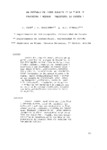El complejo de dunas eólicas de la Playa de Frouxeira (Meirás-Valdoviño, La Coruña)

View/
Use this link to cite
http://hdl.handle.net/2183/6365Collections
Metadata
Show full item recordTitle
El complejo de dunas eólicas de la Playa de Frouxeira (Meirás-Valdoviño, La Coruña)Date
1983Citation
Cadernos do Laboratorio Xeolóxico de Laxe, 1983, 6: 155-187 ISBN: 84-7492-204-6
Abstract
[Resumen] Dentro del complejo dunar, situado en la parte posterior de la playa de Frouxeira, se han distinguido varios tipos de dunas : montículos aislados, remontantes, parabólicas y blow-outs y cartografiados en cuatro subzonas: dunas activas, subrecientes, remontantes y fósiles. Se establecen las características texturales de las arenas dunares y de playa, tanto granulométricas como a partir de los índices de correlación lineal entre los diferentes parámetros, además del contenido carbonatado. Finalmente, se determina la evolución sedimentaria y su relación con el resto de la cornisa cantábrica, mediante los datos prehistóricos asociados al medio de depósito [Abstract] Several coastal sand dunes are classified ( isolated mounds, climbing, parabolic and blow-outs ) and they are distributed in four areas: active, subrecent, climbing and fossil ones. Textural patterns as well granulometric parameters as lineal correlation index among them are stablished. Finally, the sedimentary evolution is determlnated by the help of the prehistoric information from the Asturian and Cantabrian regions
ISBN
84-7492-204-6





